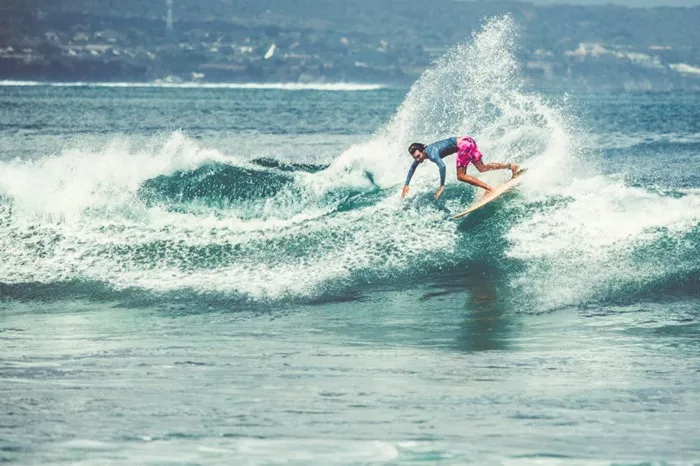Table of Contents
Speed surfing is a thrilling aspect of the sport that combines skill, technique, and a deep understanding of ocean dynamics. Whether you are a beginner eager to pick up pace or an experienced surfer looking to push your limits, increasing your speed on a wave can elevate your surfing experience to new heights. How To Get More Speed Surfing? This article explores in detail the essential factors, techniques, equipment, and training methods that can help you achieve more speed surfing effectively.
Understanding Speed in Surfing
Before diving into techniques, it’s important to understand what speed surfing entails. Surfing speed is the velocity at which you glide across the water surface riding a wave. It depends on multiple factors such as wave size and shape, board design, body positioning, and ocean conditions.
Speed surfing is not just about raw velocity; it is about controlled speed that allows maneuverability and maximizes ride duration. The faster you go, the more momentum you generate, enabling dynamic turns, aerials, and other advanced moves. However, speed without control can lead to wipeouts or loss of wave.
Factors Affecting Surfing Speed
Several interrelated factors contribute to your surfing speed:
1. Wave Selection and Positioning
One of the most critical elements is choosing the right wave. Larger, steeper waves generally offer more power, enabling faster rides. However, speed can also be achieved on smaller waves if you position yourself well in the wave’s power zone—the section where the wave energy is most concentrated.
Riding the wave’s shoulder or the “pocket” (the curved area near the breaking section) maximizes acceleration. Proper timing and reading wave behavior ensure you catch the wave at the right moment for optimal speed.
2. Surfboard Design
Surfboards vary greatly, and their design influences speed capabilities significantly.
Length: Longer boards typically provide more glide and stability, which aids in speed.
Rocker: This refers to the curve of the board from nose to tail. Boards with less rocker (flatter profile) tend to be faster because they reduce drag on the water.
Width and Thickness: Wider and thicker boards offer buoyancy and speed but may sacrifice maneuverability.
Fins: Fin size, shape, and configuration affect how the board tracks and holds speed. Thruster (three-fin) setups offer a balance, while quad fins can provide additional speed.
Selecting a board suited for speed surfing—often a shortboard or a high-performance hybrid—is essential.
3. Body Position and Technique
Your posture on the board dramatically affects hydrodynamics and speed.
Weight Distribution: Leaning slightly forward helps in gaining speed, as it encourages the board to plane over the water surface.
Stance: A low and balanced stance lowers your center of gravity, improving control at high speeds.
Paddling and Pop-up: Quick and powerful paddling combined with an efficient pop-up transition helps catch waves earlier, providing an early speed advantage.
4. Wave Riding Technique
Once on the wave, your riding technique determines how fast you go.
Bottom Turn: A deep and sharp bottom turn generates speed by converting the wave’s downward energy into forward momentum.
Trimming: Riding just ahead of the breaking wave maintains speed; staying too far back causes drag.
Pump and Generate Speed: Pumping involves shifting your weight rhythmically to gain speed on flatter sections of the wave.
Cutbacks and Carves: Smooth, aggressive turns keep speed by using wave power efficiently.
Training and Conditioning for Speed Surfing
Physical conditioning is crucial. Speed surfing requires explosive strength, endurance, and flexibility.
1. Strength and Power Training
Focus on:
Core Strength: Essential for balance and stability.
Leg Power: Helps in rapid stance changes and explosive turns.
Upper Body Strength: Boosts paddling power and pop-up speed.
Exercises like squats, lunges, planks, and push-ups are excellent.
2. Cardiovascular Endurance
Surfing can be physically demanding. Training your cardiovascular system through running, swimming, or cycling improves stamina and recovery, allowing longer and more intense sessions.
3. Balance and Flexibility
Using balance boards, yoga, and dynamic stretching increases proprioception and reduces injury risk.
Equipment Enhancements to Boost Speed
Aside from board design, additional equipment can assist:
1. Wetsuits
Lightweight, flexible wetsuits reduce drag and improve mobility.
2. Wax and Traction Pads
Proper waxing ensures foot grip, preventing slips during high-speed maneuvers.
3. Fins Customization
Experimenting with different fins and setups can optimize speed and turning ability.
Environmental and External Factors
1. Tide and Wind Conditions
Ideal tide and offshore winds create cleaner waves that support faster rides.
2. Surf Spot Selection
Different breaks have varying wave characteristics. Reef breaks often produce faster, more powerful waves than beach breaks.
Practical Tips to Increase Speed Surfing
Watch and Learn: Study professional speed surfers and analyze their wave approach and technique.
Practice Pumping: On small waves, focus on the pumping technique to build speed.
Use Video Analysis: Recording your sessions helps identify technique flaws.
Start Early: Paddle hard and catch the wave early for more speed.
Stay Relaxed: Tension reduces fluidity; stay calm to maintain control.
Common Mistakes That Reduce Surfing Speed
Leaning too far back, increasing drag.
Riding too deep inside the wave’s white water.
Poor timing on wave catch.
Using unsuitable equipment.
Avoiding these improves efficiency and speed.
Conclusion
Increasing your surfing speed is a multidimensional challenge involving wave knowledge, equipment choices, body mechanics, and physical conditioning. Selecting the right wave, using a suitable surfboard, optimizing your technique, and maintaining physical fitness are all crucial steps toward faster surfing. With consistent practice, attention to detail, and mindful adjustments, you can enhance your speed and overall surfing performance, making each ride more exhilarating and dynamic.


